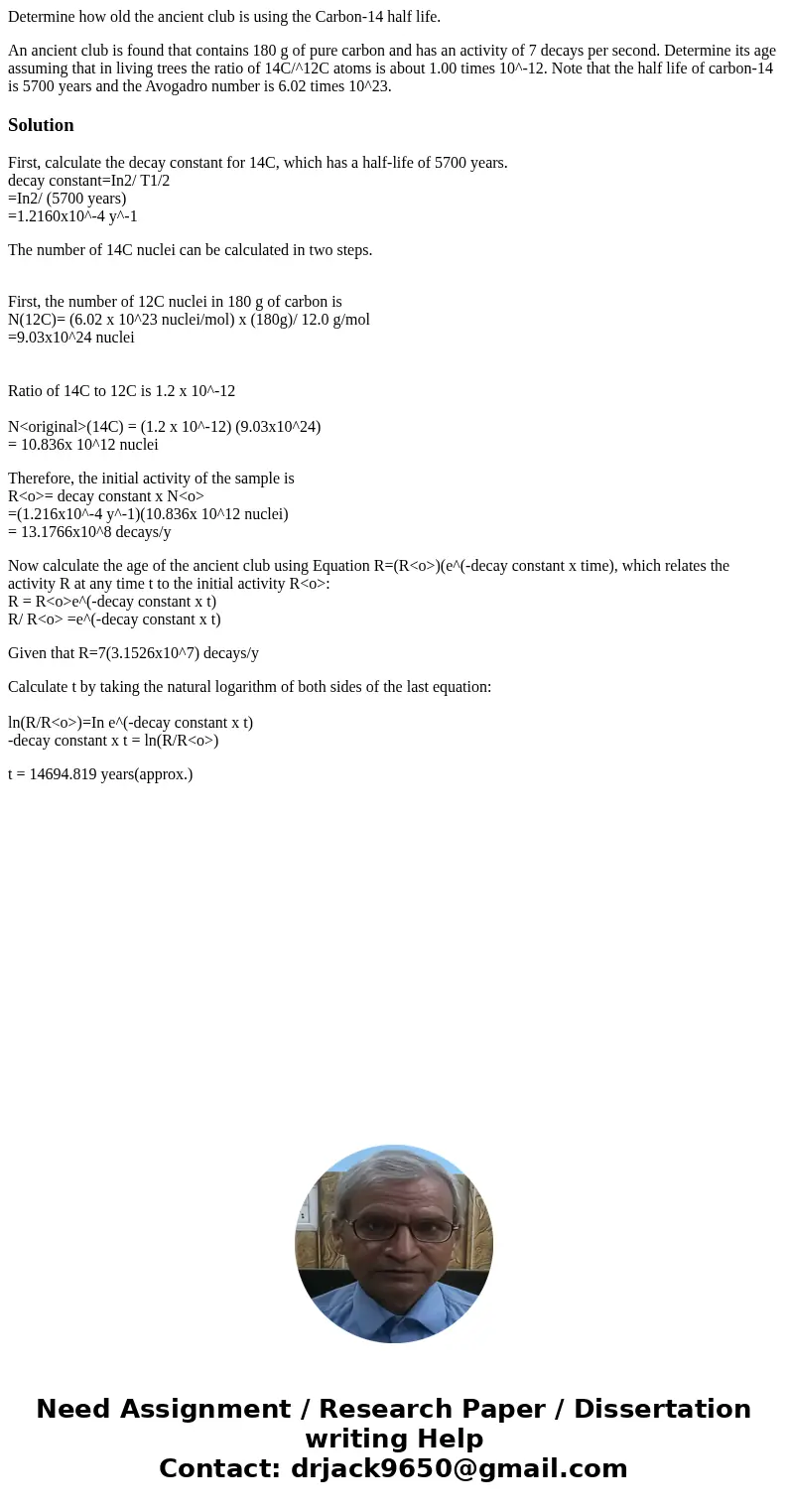Determine how old the ancient club is using the Carbon14 hal
Determine how old the ancient club is using the Carbon-14 half life.
An ancient club is found that contains 180 g of pure carbon and has an activity of 7 decays per second. Determine its age assuming that in living trees the ratio of 14C/^12C atoms is about 1.00 times 10^-12. Note that the half life of carbon-14 is 5700 years and the Avogadro number is 6.02 times 10^23.Solution
First, calculate the decay constant for 14C, which has a half-life of 5700 years.
decay constant=In2/ T1/2
=In2/ (5700 years)
=1.2160x10^-4 y^-1
The number of 14C nuclei can be calculated in two steps.
First, the number of 12C nuclei in 180 g of carbon is
N(12C)= (6.02 x 10^23 nuclei/mol) x (180g)/ 12.0 g/mol
=9.03x10^24 nuclei
Ratio of 14C to 12C is 1.2 x 10^-12
N<original>(14C) = (1.2 x 10^-12) (9.03x10^24)
= 10.836x 10^12 nuclei
Therefore, the initial activity of the sample is
R<o>= decay constant x N<o>
=(1.216x10^-4 y^-1)(10.836x 10^12 nuclei)
= 13.1766x10^8 decays/y
Now calculate the age of the ancient club using Equation R=(R<o>)(e^(-decay constant x time), which relates the activity R at any time t to the initial activity R<o>:
R = R<o>e^(-decay constant x t)
R/ R<o> =e^(-decay constant x t)
Given that R=7(3.1526x10^7) decays/y
Calculate t by taking the natural logarithm of both sides of the last equation:
ln(R/R<o>)=In e^(-decay constant x t)
-decay constant x t = ln(R/R<o>)
t = 14694.819 years(approx.)

 Homework Sourse
Homework Sourse